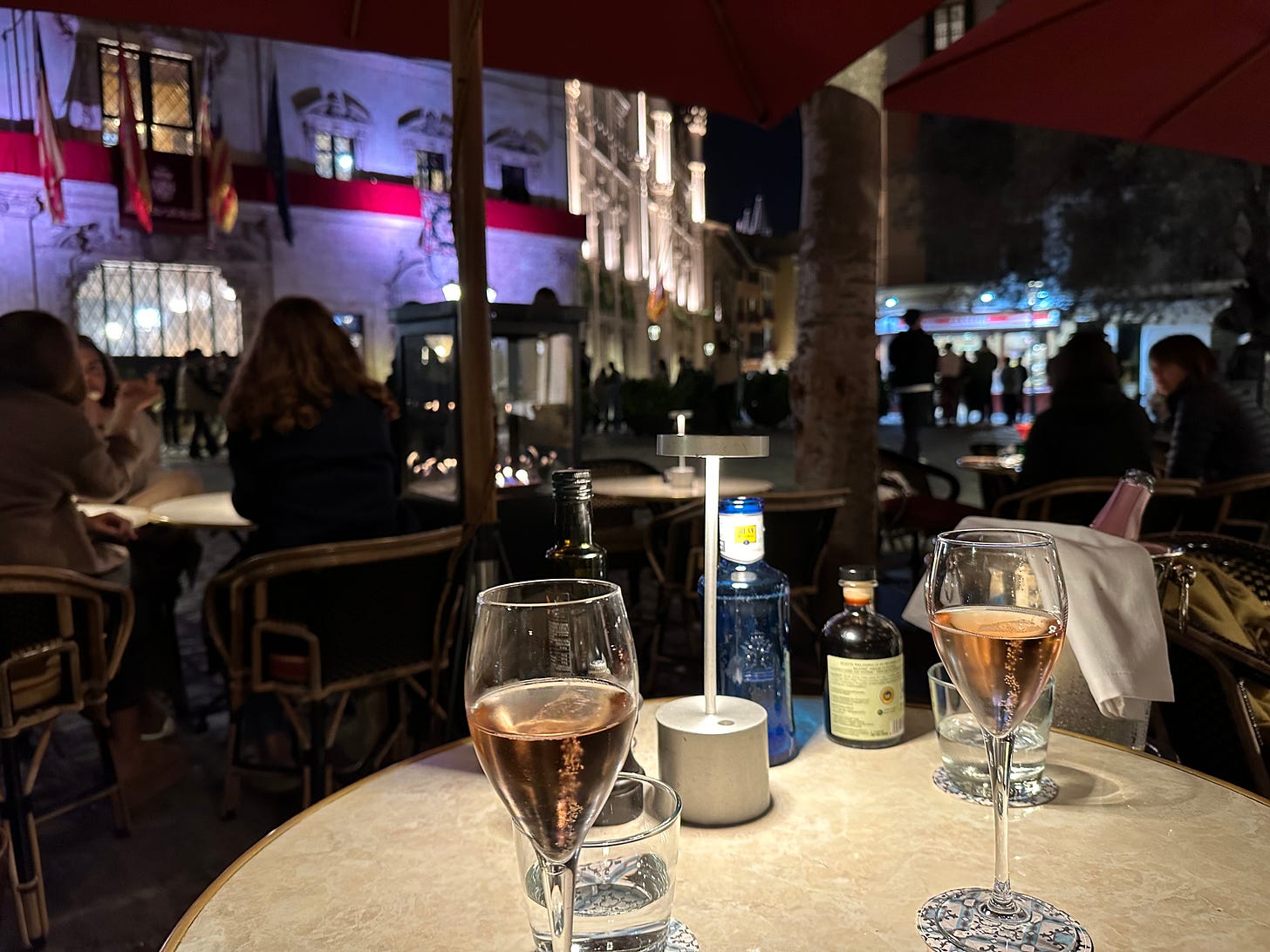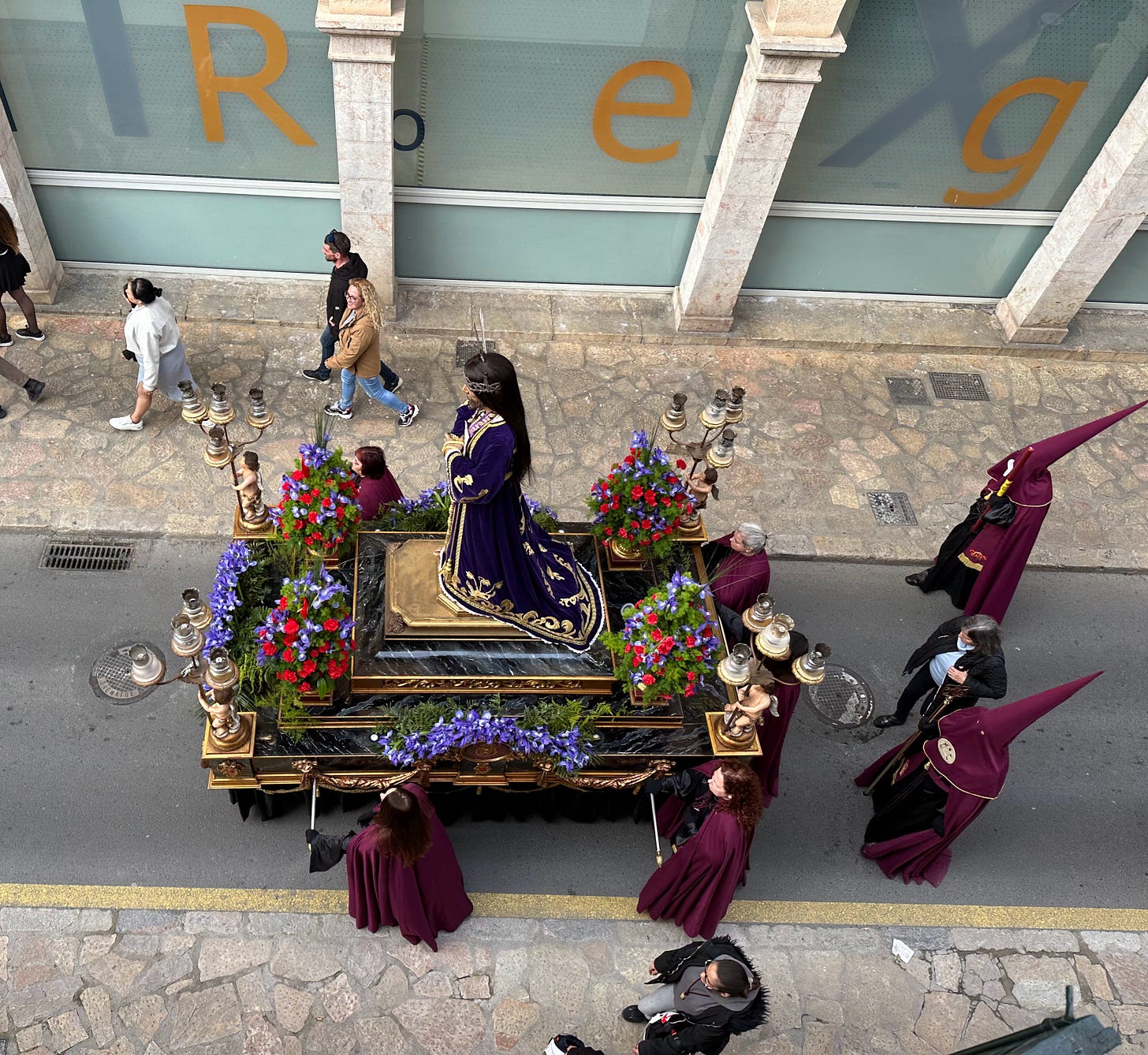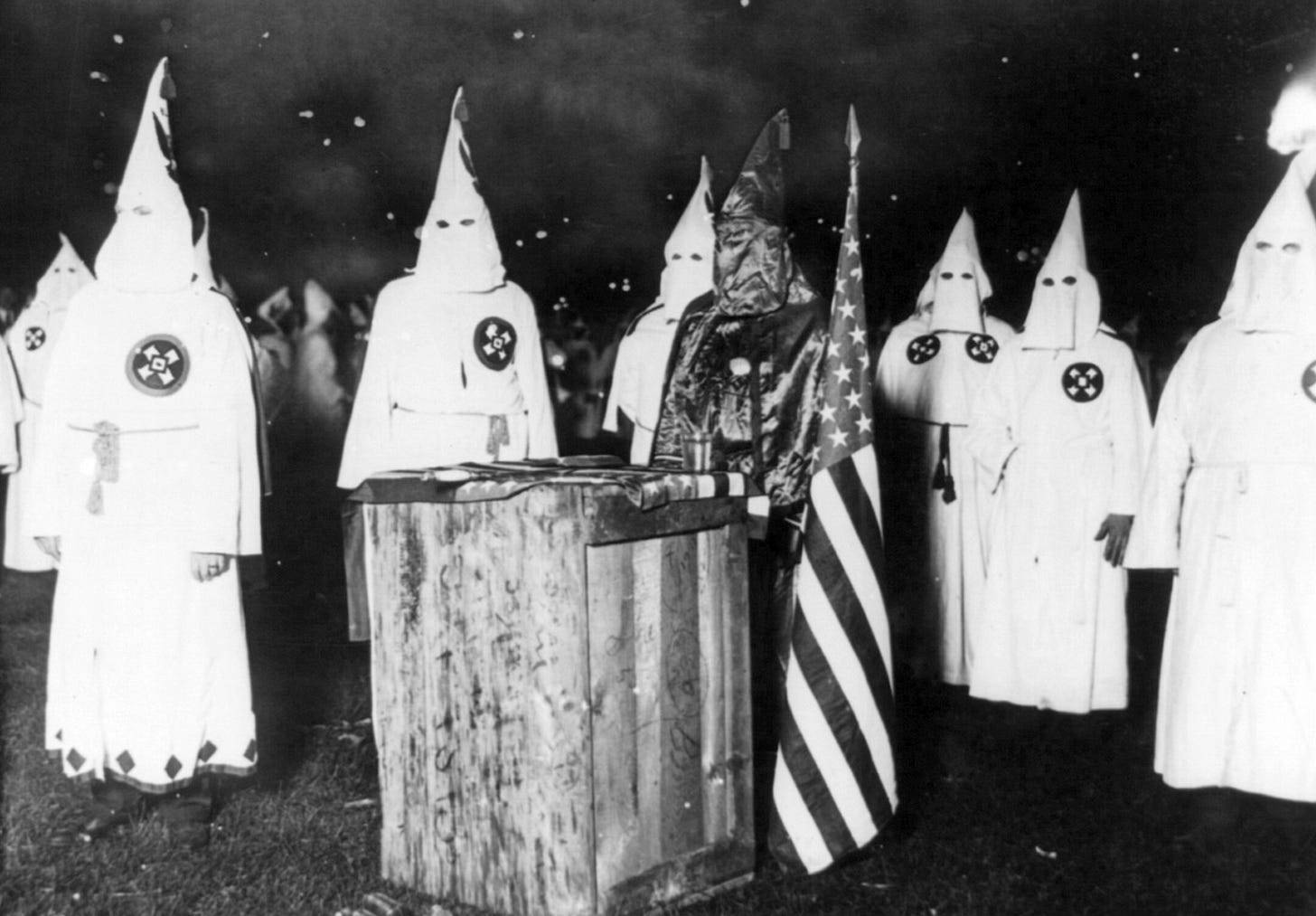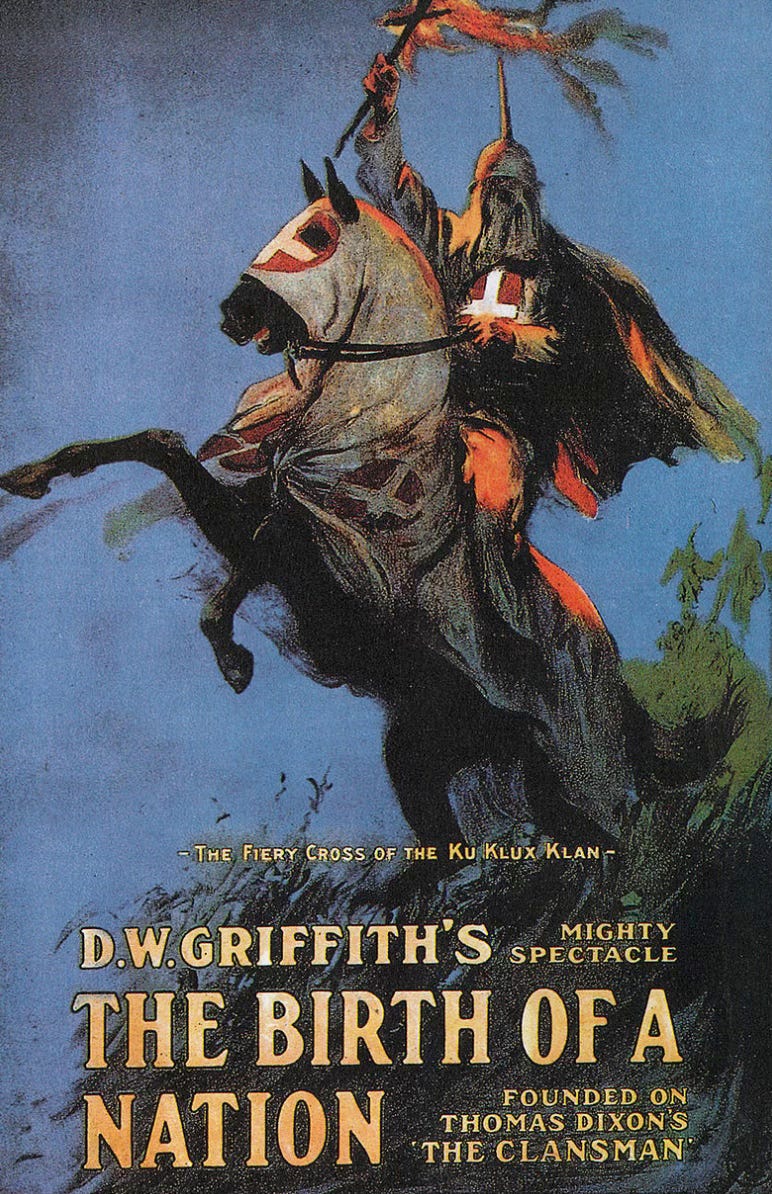Last week I shared a few of our favorite experiences while visiting Mallorca. Among them was the free walking tour we took the day we arrived. During the tour, Alexander told the group about the many Easter processions scheduled during Holy Week. He explained that cofradías or ‘brotherhoods’1 organized these.2
We Formulated a Plan
Alexander shared the website that provided the times and routes for each cofradía’s parade. There would be one Thursday night (Maundy Thursday) that would pass a few blocks from our apartment. We secured a table at a very nice restaurant on the parade route, ordered a lovely dinner and a bottle of rosé, and waited.
When I heard the band, I stood to take photos and the video above. My immediate reaction to what I saw must have been obvious to the man standing next to me. He touched my shoulder gently as if to ask if I was okay. “I am an American,” I said, “and these costumes remind me of the Klu Klux Klan.”
“Yes, it is interesting that your ‘klan’ adopted medieval costumes”, he responded with a thick German accent. It immediately dawned on me that a German knew more about American history than I did. So I started my research.
The Origin Story
I learned that the capirote, that strange conical headdress, came from the 16th century. This was the height of the Spanish Inquisition. Not only was one required to be a Christian but they must also demonstrate their piety…particularly during Holy Week. This included donning the cone-shaped hat, which had traditionally been worn by criminals, its color would identify the specific sin for which one sought absolution. Over time, the capirote wearers, made the hats longer to hide their identity. They covered their faces and cut eyeholes into the hoods.
Today the “Semana Santa” processions are also known as ‘penance processions’ in which members of the cofradías cover their faces in mourning and shame both for the sins of their forefathers during the Spanish Inquisition and those they have committed throughout the past year. They are accompanied by men on horseback, bands, and religious icons that are removed from the local churches and paraded on thrones and floats through the streets of the city.
The Klan
So how did this medieval Spanish tradition get to America? Well, it appears that the first iteration of the KKK was in the mid-1800s when a group of Confederate war veterans fought against Reconstruction through intimidation, violence, and murder. As this was a very loosely organized group, not a lot is known about it. However, with the help of a little marketing and good old fashioned capitalism, the group flourished in the 1920s.
William J. Simmons of Atlanta was obsessed with fraternal societies, which were very much in vogue during the beginning of the 20th century… Simmons belonged to over a dozen organizations, worked for one of them, the Woodmen of the World, and dreamed of starting his own fraternal organization one day. In 1915, inspired by Thomas Dixon Jr.’s novel “The Clansman: A Historical Romance of the Ku Klux Klan,” he reestablished the Ku Klux Klan as a fraternal organization.
Although the KKK relaunch was timed to coincide with the debut of “The Birth of a Nation,” D. W. Griffith's cinema adaptation of “The Clansman,” the new Klan drew few members in its first five years. Only after Simmons hired professional publicists in 1920 did Klan membership take off, peaking at millions of members in 1925.
Simmons’s organization and thus Simmons himself made their profit from membership dues - $10 - and from official Klan regalia, which he manufactured and sold. These are the white robes with conical hoods we associate with the Klan today. (emphasis added) — haaretz.com
You may recall that the costumes in Birth of a Nation look somewhat like toilet plungers with cloth. No one is quite sure why the hoods Simmons sold did not include the stick on top. Did Medieval Spain inspire him or was it that his version was cheaper to make and to ship? The cynic in me suspects it is the latter.
I realize this is an odd post…but I believe it illustrates why we love to travel. For us, travel promotes learning new things, having new experiences, and even new feelings. My experience that evening and what I learned over the next few weeks perfectly encapsulate why travel is so important to us…and I suspect to you, our readers.
Todos possamos continuar a aprender, até à próxima semana, beijinhos
Nanc
Important Notice: Many of you have commented that you would like to see more photos of me in this feed. Yes, I am camera-shy. But I love to talk. So when Kalie and Josh, from ExpatsEverywhere, contacted me suggesting I appear on their podcast I said yes. I then learned they would be video-taping it for their YouTube channel…gulp! The podcast comes out tomorrow! So if you can’t get enough of me, tune in.
The Spanish translation of Portuguese confrarias.
It reminded me of the Brigades that participate in the Annual Mummers Parade from my hometown.









Share this post